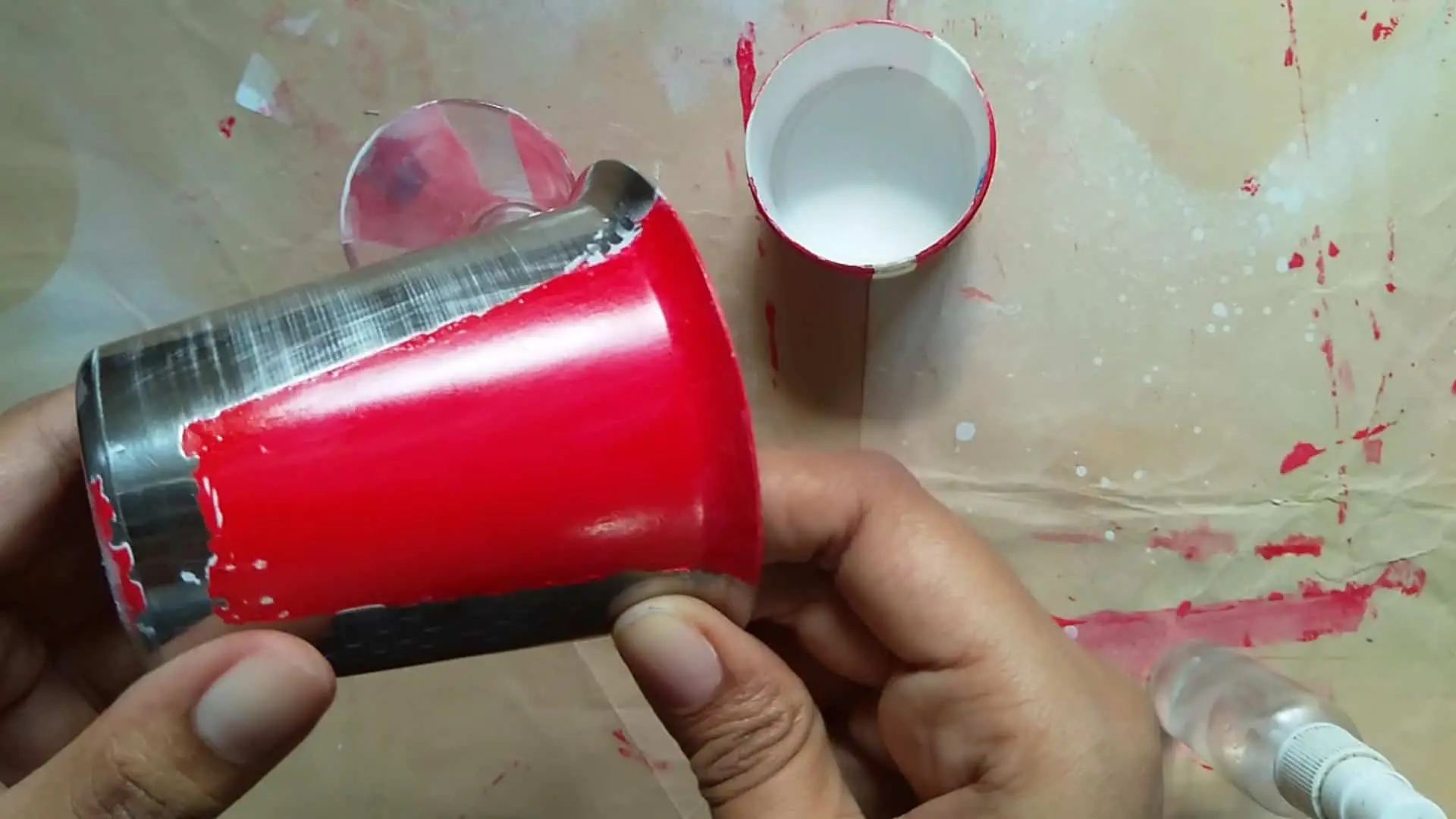You might need to paint a metal sign or any metal piece with acrylic paint. Most oil-based paints can stick to metal. As acrylic paint is water-based, you might wonder will acrylic paint sticks to metal?
Acrylic paint sticks to metal when the surface is prepared and primed with a metal primer or acrylic medium. Let the primer or acrylic medium fully dry and then gesso on it. After curing apply acrylic paint. Let the acrylic paint cure for 3 more days and apply an acrylic clear coating. Let dry for 3 days.
Although acrylic paint is very versatile, relatively cheap, and sticks to almost anything, the painting process needs to be thoroughly followed to make sure it sticks to metal well. If not, the paint will flake off and you might have wasted the time and energy for nothing.
I have recorded the whole process of sticking acrylic paint on 4 different surfaces (wood, plastic, metal, and glass). You can watch the below video and follow along with me.
Materials you will need
Below I have included a list of materials you will need to stick acrylic paint on metal with links to view the products on Amazon.
- 400 Fine grit sandpaper
- Acrylic paint
- Metal primer
- Pure Lye
- Acrylic gesso
- Acrylic matte medium
- Acrylic gel medium
- Clear acrylic coating
- Piece of cloth
Step 1: Sand the metal surface to provide tooth

Preparing the surface is one of the key things when it comes to sticking acrylic paint to any surface.
The metal surface can be prepared for acrylic painting by sanding with very fine-grit sandpaper or sandblasting, etching with 5% lye solution (optional), degreasing with white vinegar, priming with metal primer or acrylic medium, curing for 3 days, and applying gesso, and letting it dry overnight.
Metal surfaces are naturally smooth and are very rigid. Therefore paint adhesion is hard. Because acrylic paint needs some tooth on the surface to grab onto.
Otherwise, acrylic paint has a hard time grabbing onto the surface and end up making acrylic paint bonds only within the paint film. The result is paint peeling off.
Because of this reason we need to make teeth on the metal surfaces first so the paint can grab onto the surface better. To do that sand the surface with 400 grit sandpaper. You can also sandblast. After sanding remove the dust on the surface with a piece of cloth.
Note: 400 grit sandpaper has very fine grits. It helps to roughen the surface evenly throughout the metal surface. It is finer grit sandpaper than the sandpaper used to sand the plastic surface.
If you are interested to know how to stick acrylic paint to plastic I have written a whole guide on it. You will know the exact process that works to stick acrylic paint on plastic. Here is the link to the article: 5 Easy steps to stick acrylic paint on plastic to last long.
Step 2: Etch with 5% lye solution and degrease with white vinegar
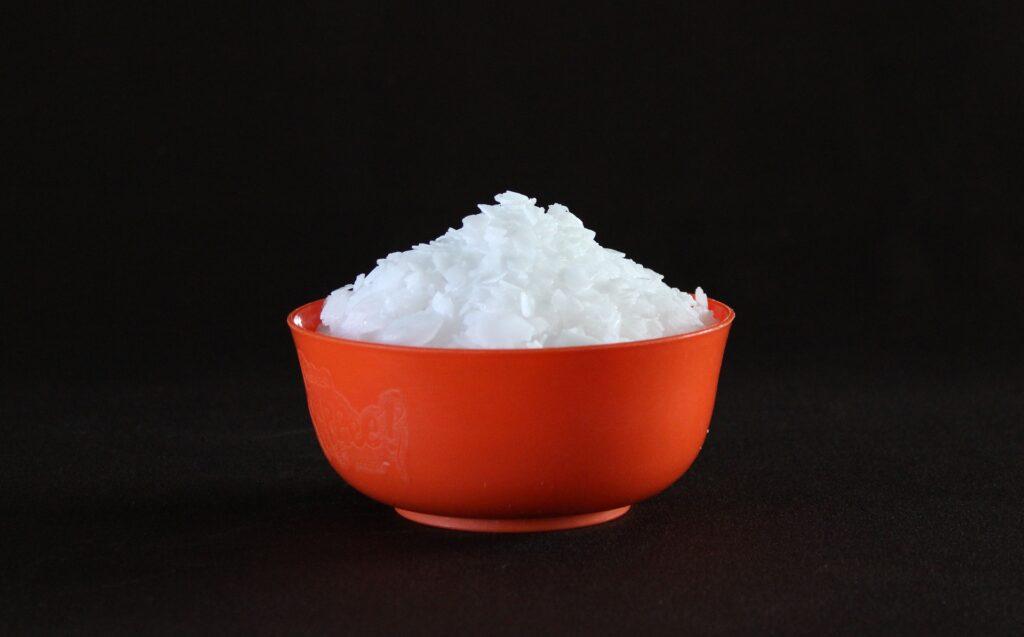
If you are going to paint on an aluminum surface then etching the surface with a 5% lye solution is important. It will roughen the surface, and the paint can stick better. To make a 5% lye solution, take 100 ml of water and add 5 grams of sodium hydroxide (caustic soda) to it. Mix.
If you want a large quantity of lye solution multiply the amount of water and caustic soda by the same number. E.g. mixing 500ml water with 25g of sodium hydroxide (caustic soda).
Dip the aluminum surface in the lye solution for about 5 minutes. You can do the same with any metal surface you are trying to paint. However, etching the metal surface is not compulsory. you can skip that step if you want.
Some metal pieces have a rubbery coating or grease on them. To remove them, cleaning up with acid and water is important for better paint adhesion. You can use white vinegar and a water mixture. Pour some of the mixtures onto the surface and rub with a piece of cloth.
Step 3: Apply a metal primer or acrylic medium and gesso
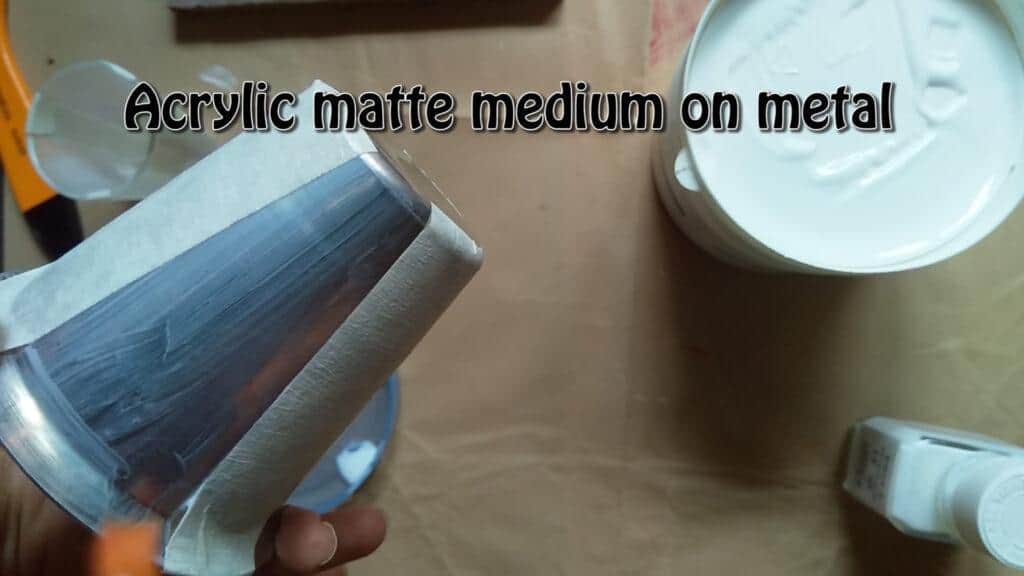
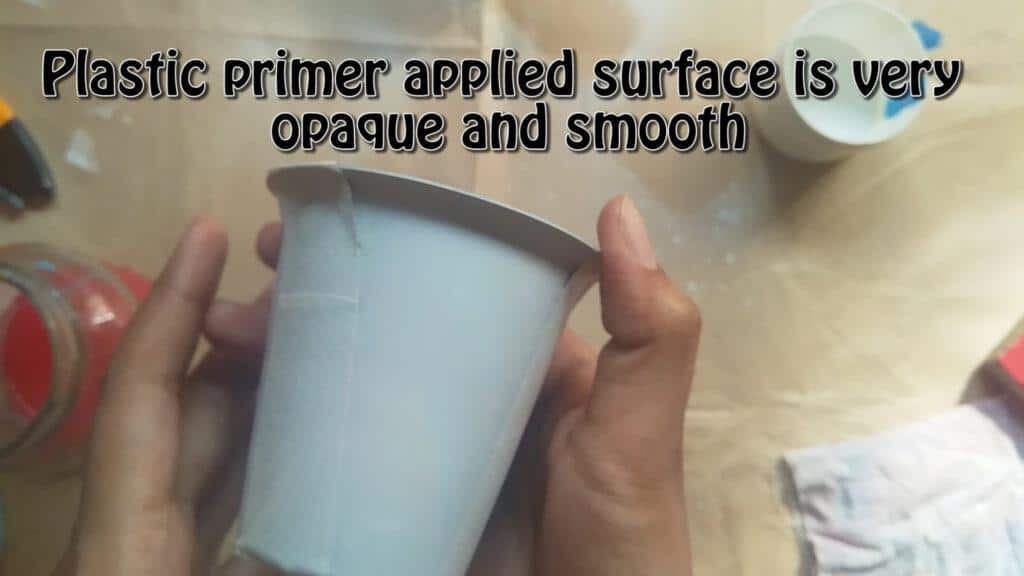
After degreasing the surface apply a metal primer. Metal primers can adhere to prepared metal surfaces than acrylic paint itself. Apply the metal primer to the prepared surface and let it cure for at least 3 days (or as indicated on the paint bottle).
Priming is one of the key steps that make acrylic paint stick onto a surface. Then lightly sand the primed surface and apply a coat of gesso. Let it dry overnight. Now the surface is ready to be painted with acrylics. You might wonder if metal primers are an absolute necessity when painting with acrylics on metal.
In general, acrylic paint cannot be used on metal without a metal primer as the paint peel off upon contact with moisture or scratching and metal is prone to rust. However, acrylic paint can be used on the prepared acrylic medium and gesso primed surface if metal rusting is not a concern.
If you do not want to bother with buying an industrial metal primer, there is another good solution. Use acrylic mediums before applying gesso on metal. Acrylic mediums act as glue and have better surface adhesion than gesso or acrylic paint.
There is one caveat to applying acrylic mediums for priming. Metals are prone to rusting and acrylic mediums will not protect the surface form rusting. Unless you are using a metal that do not rust, do not consider using only acrylic mediums for priming.
You can apply acrylic matte medium or gel medium first onto the degreased surface. Wait for around two hours for the medium to dry and then apply gesso. Let the acrylic medium and gesso dry overnight.
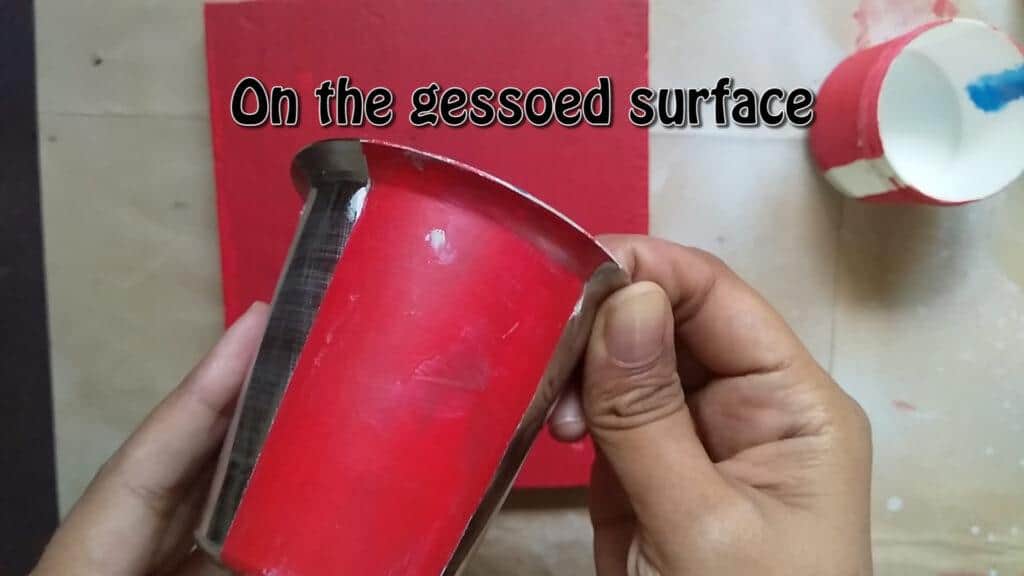
Also, make sure that you do not ever paint on a surface only primed with gesso. It will completely ruin the look of the acrylic-painted piece.
Step 4: Apply acrylic paint on the primed surface
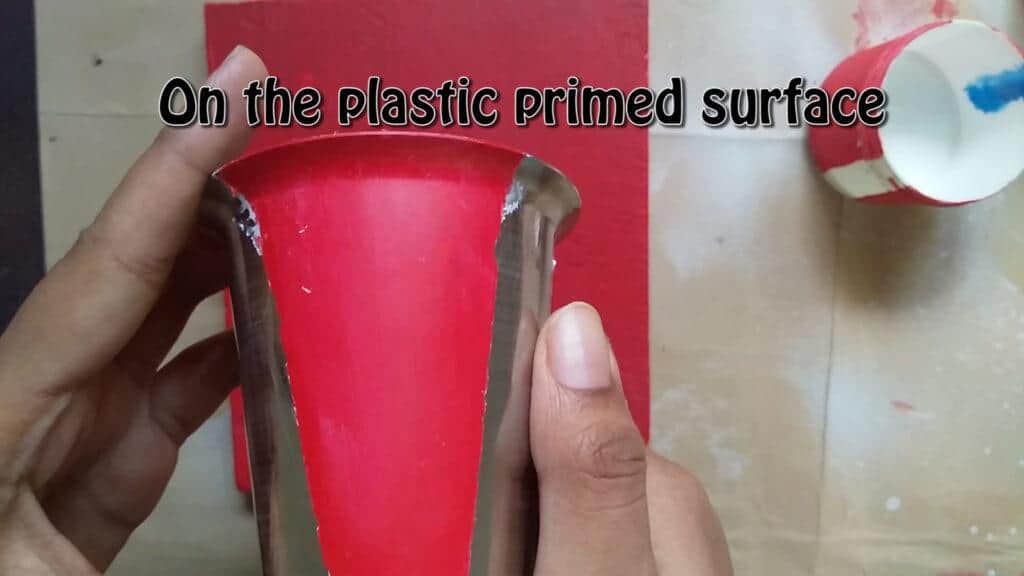
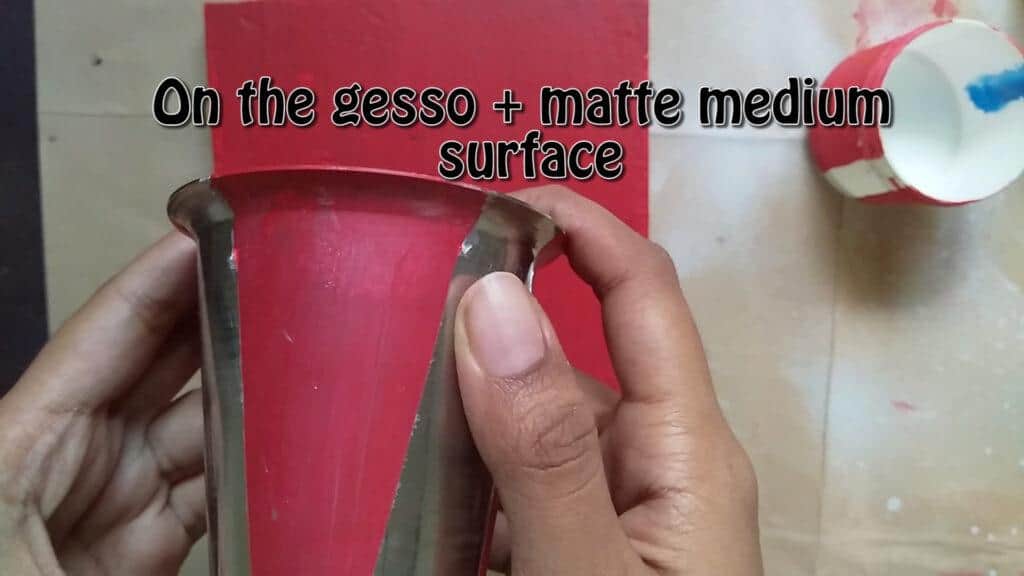
Now that the primer or gesso is dry and the surface is prepared, you can apply acrylic paint. You can use craft acrylics or student-grade acrylics for this surface. As most metal painting projects are craft projects it is best not to waste any artist-grade acrylics for these projects.
Liquitex BASICS (link to view on Amazon)is a student-grade acrylic paint and is a good choice for these projects. After painting let the acrylic paint cure for at least 3 days. In the curing process, all the water in the acrylic paint film will escape and the paint film will harden on the surface and have better adhesion to the surface.
If you use an industrial metal primer, after applying acrylic paint, it will have the best coverage and the smoothest surface. The surface with acrylic medium and gesso does not have that much coverage. This can be affected by the transparency of the gesso used. However, the most elegant, fine-quality look was obtained with industrial metal primer.
Step 5: Check the surface adhesion with an adhesion test
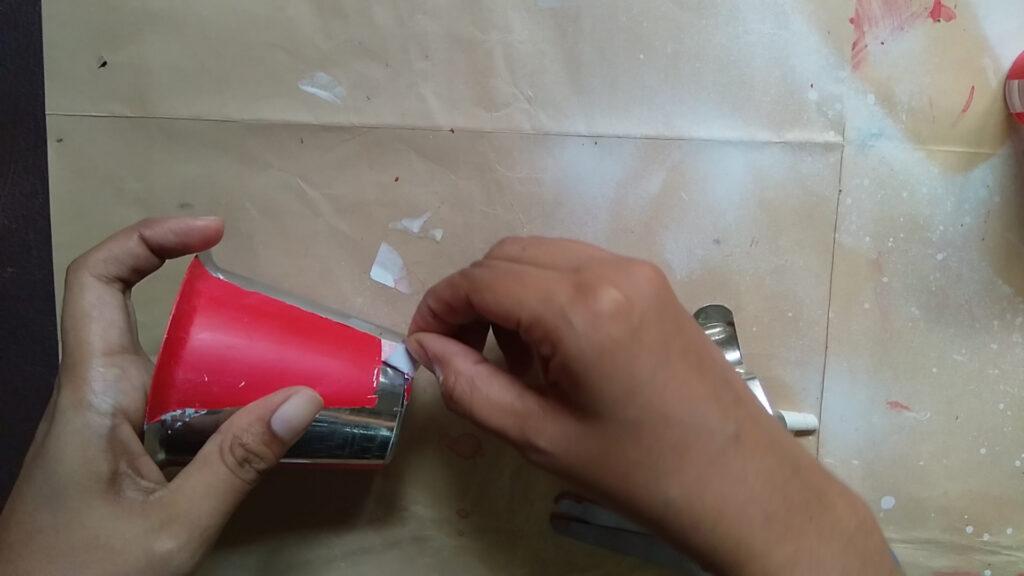
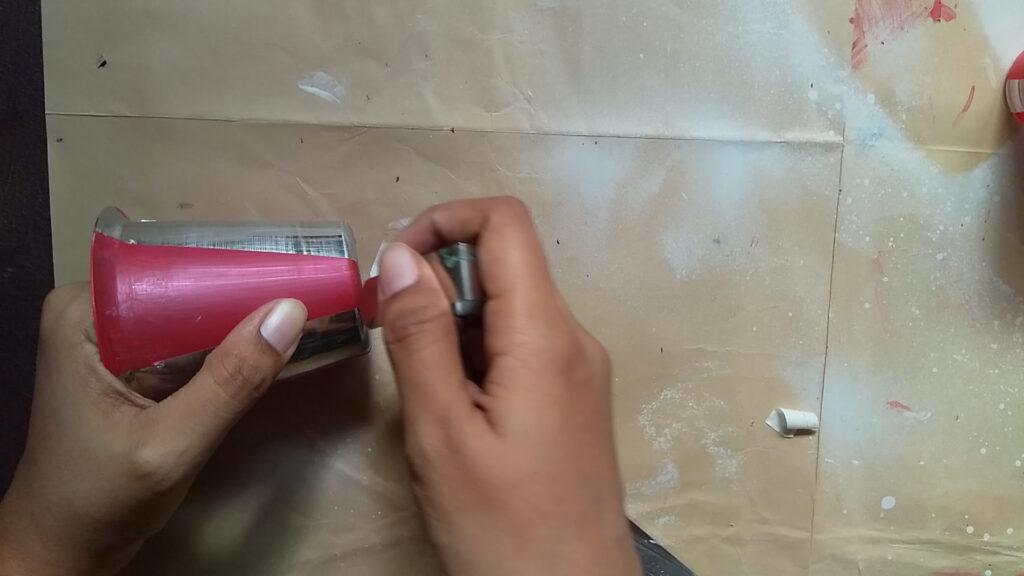
Now that you have let the acrylic paint cure for 3 more days, you can perform the adhesion test. The adhesion test checks how well the paint has adhered to a surface. Follow the below steps to do the adhesion test.
- When the paint is fully dry, score the paint surface in a crosshatch pattern with a sharp knife.
- Apply masking tape on the scored surface and burnish it well.
- Remove the masking tape slowly.
- If any paint comes off with the masking tape, a good surface adhesion is not achieved. This happens when you haven’t allowed the paint to fully cure, surface preparation is not done correctly or when the paint and primers are not compatible with the plastic surface.
If you haven’t let the painted surface cure for more than 3 days, redo the adhesion test after fully curing the paint. Try preparing the surface again as mentioned in steps 1 and 2 and redo the adhesion test. If these did not work using a different primer or paint will help.
If you find that acrylic paint does not stick to metal even though you followed the steps exactly as it is, the option will be to use a paint that is specifically made for metal surfaces. Following are links to some of the best brands of metal paints available on Amazon.
Step 6: Apply a clear acrylic coating for extra protection
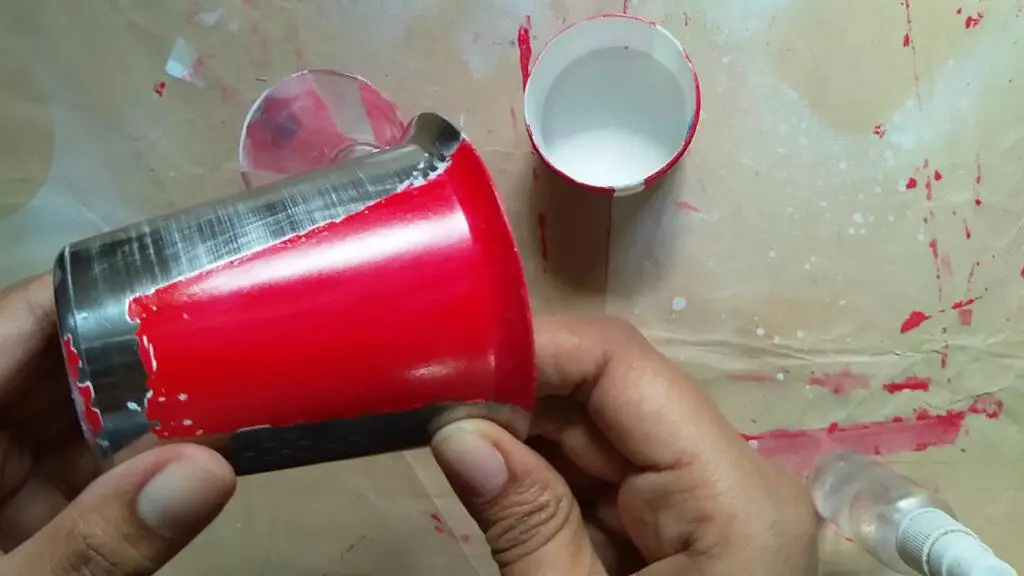
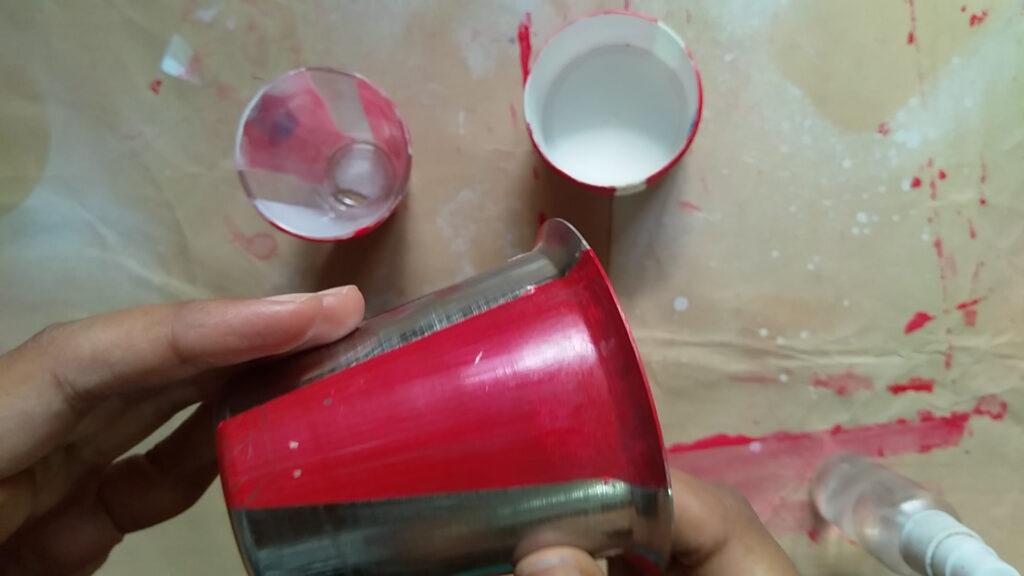
Finishing your work with a clear acrylic coating will protect the painted piece from environmental factors such as moisture, dust, and UV rays.
You can use the Krylon Artist and Clear Coatings Aerosol (link to view on Amazon) for this purpose. Make sure to wait until the paint is fully cured. As mentioned before 3 days is enough for thin paint layers to cure. But for thick paint layers or in high humidity, it will take around 1 to 2 weeks to fully cure the paint.
I have written a whole article about acrylic paint being sticky when the paint is not fully cured (link to the article). You will find many factors that can affect the drying process of acrylics and the best ways to tackle them in the article.
After acrylic paint is fully cured apply the clear coating. let the clear coating dry for at least 3 days. It will take more than 3 days to cure the acrylic coating in a humid environment.
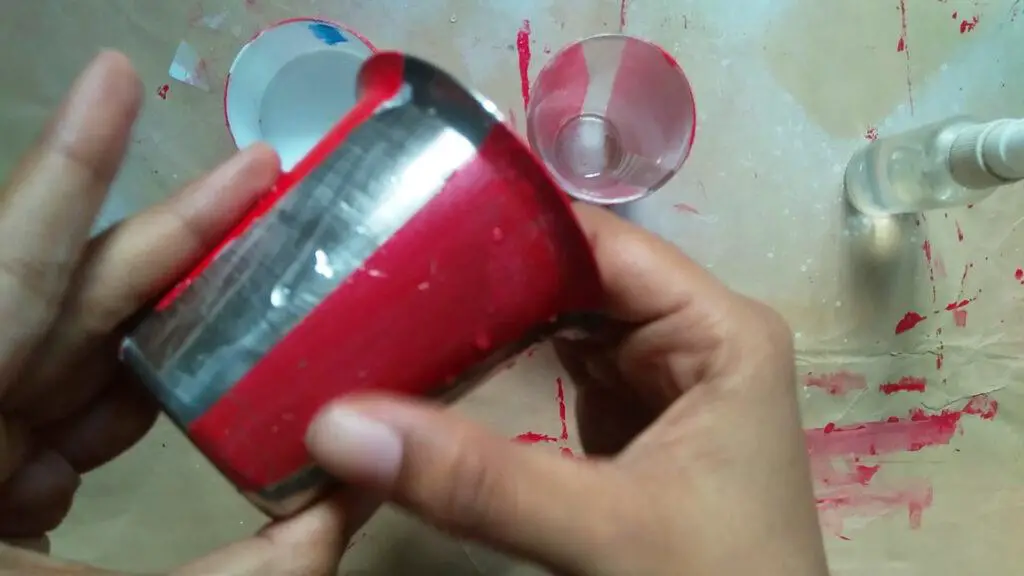
I sprayed some water on the acrylic clear coated surface to test how the finished work can hold water. Clearcoat holds the water very well and acted as a barrier between the paint and water. If you are going to keep your finished work outside, or if you want to give extra protection to your art piece, applying a clear acrylic coating is the best choice.
I have also written an article about what acrylic paint will not stick to. You will know what to avoid when it comes to sticking acrylic paint. Also how to stick acrylic paint on many other surfaces and keep it off.
Conclusion
Acrylic paints are widely used by both artists and crafters because of their versatility. It can stick to almost every surface from plastic to glass to metal to canvas. You can buy canvases already prepared to be painted with acrylics. But when painting on unusual surfaces which were not prepared for acrylic painting we must prepare the surfaces correctly.
Usually in the case of plastic, metal, and glass. Although gesso is enough to prime a canvas when painting metal, metal primer or acrylic mediums with adhesive nature need to be used under the gesso layer. Also preparing the surface by sanding, etching, and degreasing are important for better paint adhesion.
FAQ
Is acrylic paint suitable for metal?
Acrylic paint is suitable for metal surfaces as it is very versatile and accessible with a wide variety of options. However, for permanent artwork preparing the surface by sanding, etching (optional), degreasing, and priming with a metal primer is necessary. After painting finish with acrylic clear coating.
What paint will stay on metal?
Both oil-based and water-based paint specially designed for metal surfaces can stay on metal. Water-based metal paints are formulated with acrylic resin and alkyd resins. Oil-based metal paints are called enamel paint. In general, they are anti-corrosive, oil-resistant, and weather-resistant.

